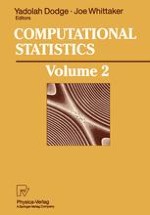The papers assembled in this book were presented at the biannual symposium of Inter national Association for Statistical Computing in Neuchcitel, Switzerland, in August of 1992. This congress marked the tenth such meeting from its inception in 1974 at Vienna and maintained the tradition of providing a forum for the open discussion of progress made in computer oriented statistics and the dissemination of new ideas throughout the statistical community. It was gratifying to see how well the groups of theoretical statisti cians, software developers and applied research workers were represented, whose mixing is an event made uniquely possible by this symposium. While maintaining traditions certain new features have been introduced at this con ference: there were a larger number of invited speakers; there was more commercial sponsorship and exhibition space; and a larger body of proceedings have been published. The structure of the proceedings follows a standard format: the papers have been grouped together according to a rough subject matter classification, and within topic follow an approximate aphabetical order. The papers are published in two volumes ac cording to the emphasis of the topics: volume I gives a slight leaning towards statistics and modelling, while volume II is focussed more on computation; but this is certainly only a crude distinction and the volumes have to be thought of as the result of a single en terprise.
